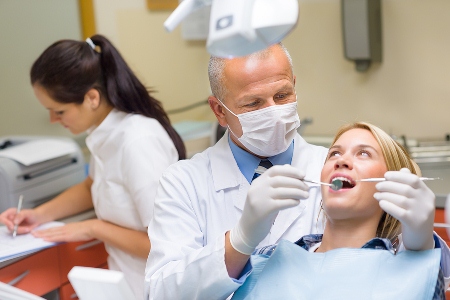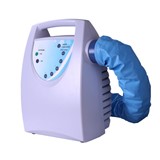Since the 2014-15 Federal Budget was handed down in May, it's become clear that the dental sector will have to navigate a very tough financial year, according to the Australian Healthcare and Hospitals Association (AHHA).
"With $390 million in dental funding for Australia being deferred until 2015-16, it is essential that we introduce new and more cost effective models of care for public dentistry to help deal with the increased demand for care," asserted Deborah Cole, Chief Executive Officer, Dental Health Services Victoria, in a recent statement.
"If we are honest with ourselves, what we are doing isn't working. While we have significantly increased the number of patients we treat in the public dental sector, we are still only reaching less than 20 per cent of the eligible population in Victoria. Despite being largely preventable, tooth decay remains one of our most common health problems.
Cole said the dental sector is also no different to other health services in that it often provides services that are not supported by evidence and, in some cases, don't make people healthier.
"So how do we treat more people with the limited resources at our disposal? We move away from 'the way things have always been done' and introduce more innovative models of care that are patient-centred, multidisciplinary, collaborative and evidence-based. This new approach to the patient journey needs to focus on the prevention and early intervention of oral disease while ensuring that all members of the dental team are working to their full potential.
The patient journey
"About two years ago, we stood back and analysed the patient journey, starting well before our patients walk through the clinic doors. After deciding on a set of principles that would underpin our new models of care — including a population health approach, preventive techniques and evidence-based interventions — we looked at all the factors impacting oral health. We also looked at how we could better integrate oral health messages into services like early parenting programs, chronic disease programs and general health screenings.
"Despite being an essential component for overall health and wellbeing, dental conditions still suffer from a low health profile with the mouth viewed as separate to the rest of the body in the general health arena. If we want to see a real improvement in the oral health of the community, we need to ensure that oral health inches up the priority list by building stronger partnerships with community and health services.
"A great example of this is the work we have done in championing oral health through midwives. Through the Healthy Families, Health Smiles initiative, Dental Health Services Victoria (DHSV) offered online oral health training to midwives taking part in the Midwifery Initiated Oral Health Education Program.
"Participants improved their knowledge about oral health during pregnancy and the training engaged a new workforce in oral health promotion that are trusted sources of information for pregnant women. Over the coming years we are going to focus on expanding our collaborative initiatives to build our army of oral health champions.
Dentistry funding
"Along with building strong partnerships, we need to ensure that dentistry is funded in the same manner as general health rather than being approached as a predominantly out-of-pocket expense. We also need to revolutionise the way we approach the patient's clinical journey," Cole said.
"In our development of new models of care, we went back to basics and looked at who was receiving care, who was delivering the care and what type of care was being provided. It became clear that workforce reform would be a crucial component in providing more cost effective treatment.
"DHSV has invested significant resources into expanding the scope of practice of members of the dental team. We have supported 13 dental assistants to complete their Certificate IV qualification in oral health promotion and radiology, with 60 more enrolled to complete a Certificate IV qualification in the coming year.
"These qualifications enable dental assistants to take on more diverse responsibilities like delivering oral health promotion and completing radiographs and fluoride applications. We have also supported our oral health therapists to expand their scope of practice to treat adults aged 26 years and over. Upskilling these members of the dental team supports a more preventive approach and reduces the cost per patient by enabling dentists to focus on complex procedures.
"Slowly but surely, we are getting our ducks in a row and laying a solid foundation to introduce new models of care in the public dental sector. The 2014-15 Federal Budget has provided a burning platform for us to accelerate our progress towards implementing a new and more cost effective approach to the patient journey. I am confident that we are on the right track to help more people experiencing disadvantage live healthier and happier lives."
- Suppliers
- New to MedicalSearch? Book a Demo
- Advertise with us
- Login
- Email Marketing
- Buyers
- Get Quotes
- Articles & Ideas
- Login
- Subscribe to newsletter
- My Details
- Get Quotes
- Accident & Emergency Care
- Aged Care & Disability
- Anaesthesia & Respiratory Care
- Beauty & Wellness
- Cardiology & Cardiac Surgery
- Commercial Cleaning & Laundry Supplies
- Dental Care & Oral Surgery
- Diagnostic Instruments & Medical Imaging
- Disinfection & Sterilisation
- ENT & Audiology
- Gynaecology & Obstetrics
- Homecare & Consumer Medical
- Hospital Equipment & Supplies
- Intensive Care Unit
- Laboratory & Pathology
- Medical Apparel
- Medical Devices & Products
- Medical Fridges & Freezers
- Medical Storage & Filing
- Medical Waste Management
- Optometry & Ophthalmology
- Orthopaedics & Podiatry
- Paediatrics & Neonatology
- Patient Monitoring & Management
- Physiotherapy & Rehabilitation
- PPE & Infection Control
- Single Use Medical Consumables
- Surgical Tools & Supplies
- Treatment Beds, Tables & Couches
- Veterinary Equipment
- Wheelchairs & Mobility Aids
- Get Quotes
- Accident & Emergency Care
- Aged Care & Disability
- Anaesthesia & Respiratory Care
- Beauty & Wellness
- Cardiology & Cardiac Surgery
- Commercial Cleaning & Laundry Supplies
- Dental Care & Oral Surgery
- Diagnostic Instruments & Medical Imaging
- Disinfection & Sterilisation
- ENT & Audiology
- Gynaecology & Obstetrics
- Homecare & Consumer Medical
- Hospital Equipment & Supplies
- Intensive Care Unit
- Laboratory & Pathology
- Medical Apparel
- Medical Devices & Products
- Medical Fridges & Freezers
- Medical Storage & Filing
- Medical Waste Management
- Optometry & Ophthalmology
- Orthopaedics & Podiatry
- Paediatrics & Neonatology
- Patient Monitoring & Management
- Physiotherapy & Rehabilitation
- PPE & Infection Control
- Single Use Medical Consumables
- Surgical Tools & Supplies
- Treatment Beds, Tables & Couches
- Veterinary Equipment
- Wheelchairs & Mobility Aids
Trusted by 520,000 Australian medical buyers
Buyers
- Discover products & solutions
- Login
- Subscribe To Newsletter
- Browse All Products
- Read Articles
Suppliers
Advertise
- Promote your products & solutions
- New to MedicalSearch? Book a Demo
- Login / Forgot Password
- Advertise Your Products
- Success Stories
- Email Marketing
- Suppliers
- Advertise with us
- Login
- Email Marketing
- Buyers
- Get Quotes
- Articles & Ideas
- Login
- Subscribe to newsletter
- My Details
Get Quotes
- Accident & Emergency Care
- Aged Care & Disability
- Anaesthesia & Respiratory Care
- Beauty & Wellness
- Cardiology & Cardiac Surgery
- Commercial Cleaning & Laundry Supplies
- Dental Care & Oral Surgery
- Diagnostic Instruments & Medical Imaging
- Disinfection & Sterilisation
- ENT & Audiology
- Gynaecology & Obstetrics
- Homecare & Consumer Medical
- Hospital Equipment & Supplies
- Intensive Care Unit
- Laboratory & Pathology
- Medical Apparel
- Medical Devices & Products
- Medical Fridges & Freezers
- Medical Storage & Filing
- Medical Waste Management
- Optometry & Ophthalmology
- Orthopaedics & Podiatry
- Paediatrics & Neonatology
- Patient Monitoring & Management
- Physiotherapy & Rehabilitation
- PPE & Infection Control
- Single Use Medical Consumables
- Surgical Tools & Supplies
- Treatment Beds, Tables & Couches
- Veterinary Equipment
- Wheelchairs & Mobility Aids
Get Quotes
- Accident & Emergency Care
- Aged Care & Disability
- Anaesthesia & Respiratory Care
- Beauty & Wellness
- Cardiology & Cardiac Surgery
- Commercial Cleaning & Laundry Supplies
- Dental Care & Oral Surgery
- Diagnostic Instruments & Medical Imaging
- Disinfection & Sterilisation
- ENT & Audiology
- Gynaecology & Obstetrics
- Homecare & Consumer Medical
- Hospital Equipment & Supplies
- Intensive Care Unit
- Laboratory & Pathology
- Medical Apparel
- Medical Devices & Products
- Medical Fridges & Freezers
- Medical Storage & Filing
- Medical Waste Management
- Optometry & Ophthalmology
- Orthopaedics & Podiatry
- Paediatrics & Neonatology
- Patient Monitoring & Management
- Physiotherapy & Rehabilitation
- PPE & Infection Control
- Single Use Medical Consumables
- Surgical Tools & Supplies
- Treatment Beds, Tables & Couches
- Veterinary Equipment
- Wheelchairs & Mobility Aids
Trusted by 520,000 Australian medical buyers




-160x160-state_article-rel-cat.png)








